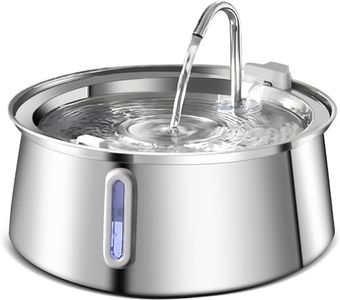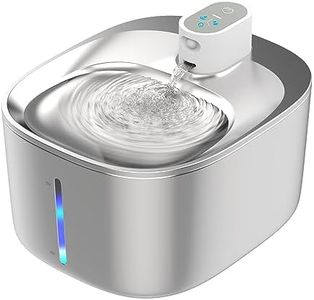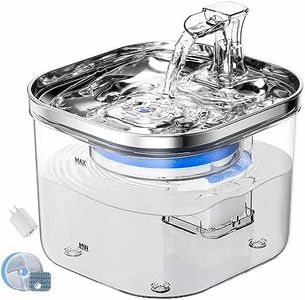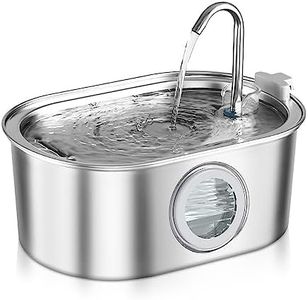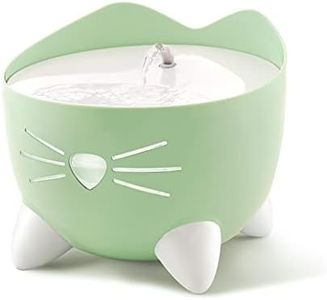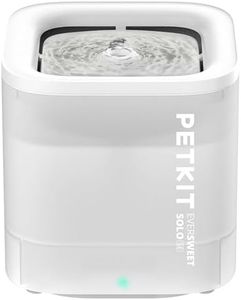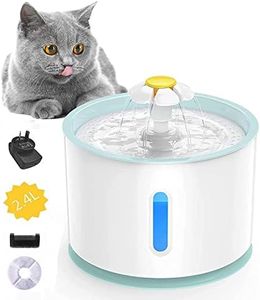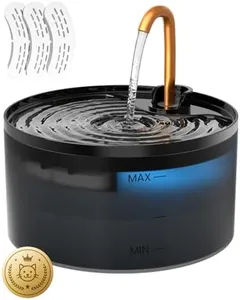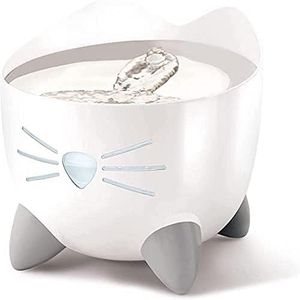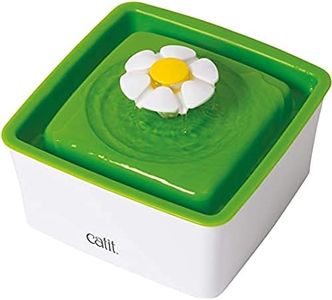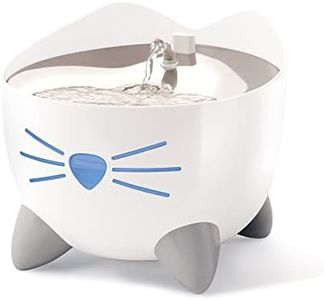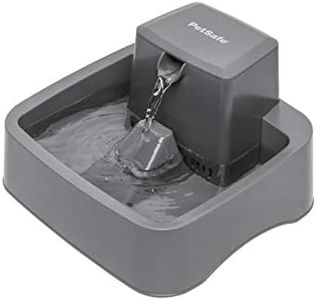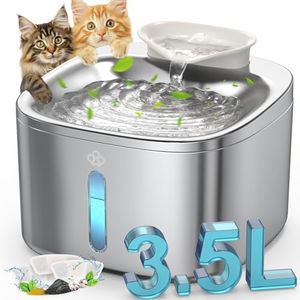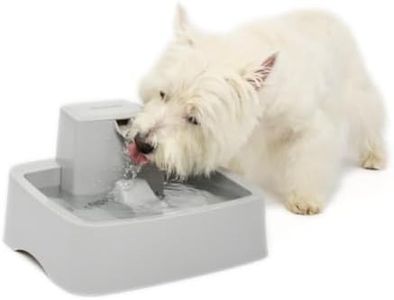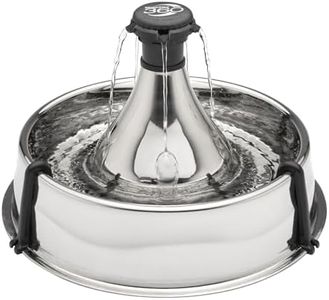We Use CookiesWe use cookies to enhance the security, performance,
functionality and for analytical and promotional activities. By continuing to browse this site you
are agreeing to our privacy policy
10 Best Cat Drinking Fountains
From leading brands and best sellers available on the web.Buying Guide for the Best Cat Drinking Fountains
Choosing the right cat drinking fountain is essential for keeping your feline healthy and well-hydrated. Cats are often picky about water, and a good drinking fountain can encourage them to drink more, which supports kidney and urinary tract health. When shopping, you should focus on features that match your cat’s habits, your living space, and how much maintenance you’re willing to do. Paying attention to a few key specifications will help ensure you pick a fountain that keeps both you and your cat happy.CapacityCapacity refers to how much water the fountain can hold at one time, usually described in liters or ounces. This is important because it affects how often you need to refill the fountain, and ensures your cat always has access to fresh water. Small-capacity fountains (under 1 liter) are best for single-cat households or if you don’t mind frequent refills, while medium (1-2 liters) and large (over 2 liters) capacities are ideal if you have multiple cats or want less maintenance. Consider your cat’s drinking habits, the number of pets, and how often you’re at home to choose the right capacity for your lifestyle.
Filtration SystemThe filtration system cleans and purifies the water, removing hair, debris, and odors. This is crucial for both your cat’s health and the taste of the water. Some fountains use simple mesh filters, while others include multi-stage filters with activated carbon for odor control and foam for debris. For households with sensitive cats or hard water, a more advanced (multi-layer) filtration system is preferable. If your cat is not sensitive and you want less ongoing cost and maintenance, a simpler filter may suffice. Regular filter changes are necessary, so consider the ease and cost of replacements.
MaterialCat fountains are typically made from plastic, stainless steel, or ceramic. This matters for both hygiene and durability. Plastic is lightweight and affordable but can get scratched and harbor bacteria over time. Stainless steel is sturdy, resists bacteria, and is easy to clean, making it great for sensitive cats. Ceramic is attractive and also hygienic but heavier and more fragile. Choose plastic for portability and budget-friendliness, stainless steel for durability and health, or ceramic for aesthetics and easy cleaning. Always ensure the material meets your cat’s sensitivities and your cleaning preferences.
Noise LevelNoise level describes how loud the running water and pump sound. This is important both for your cat’s comfort and yours—some cats are frightened away by loud fountains, while others may enjoy the sound. Noise-quiet fountains are best for nervous cats or if the fountain is kept in bedrooms or living areas, while a bit more sound can be acceptable for outgoing cats or if placed in less-used rooms. Check if users report a quiet or moderate noise level and consider where you’ll place the fountain in your home.
Ease of CleaningEase of cleaning means how simple it is to take apart, wash, and maintain the fountain. Dirty fountains can quickly become breeding grounds for bacteria, so simple cleaning is vital. Some designs have many small parts or tight spots that are hard to reach, while others can be easily disassembled and even placed in the dishwasher. If you don’t want to spend much time on upkeep, look for a fountain with fewer parts and smooth surfaces. If you have multiple pets or your cat sheds a lot, prioritize easy cleaning to keep water fresh.
Flow PatternsFlow patterns indicate how the water moves in the fountain—such as bubbling, streaming, or waterfall effects. Some cats prefer moving water because it seems fresher, while others might like gentle bubbling instead of splashing streams. Fountains with adjustable flow let you tailor the movement to your cat’s preference. Observe your cat’s reaction to flowing water or try a fountain with more than one option if you’re unsure. Picking the right flow will make your cat more likely to drink regularly.
